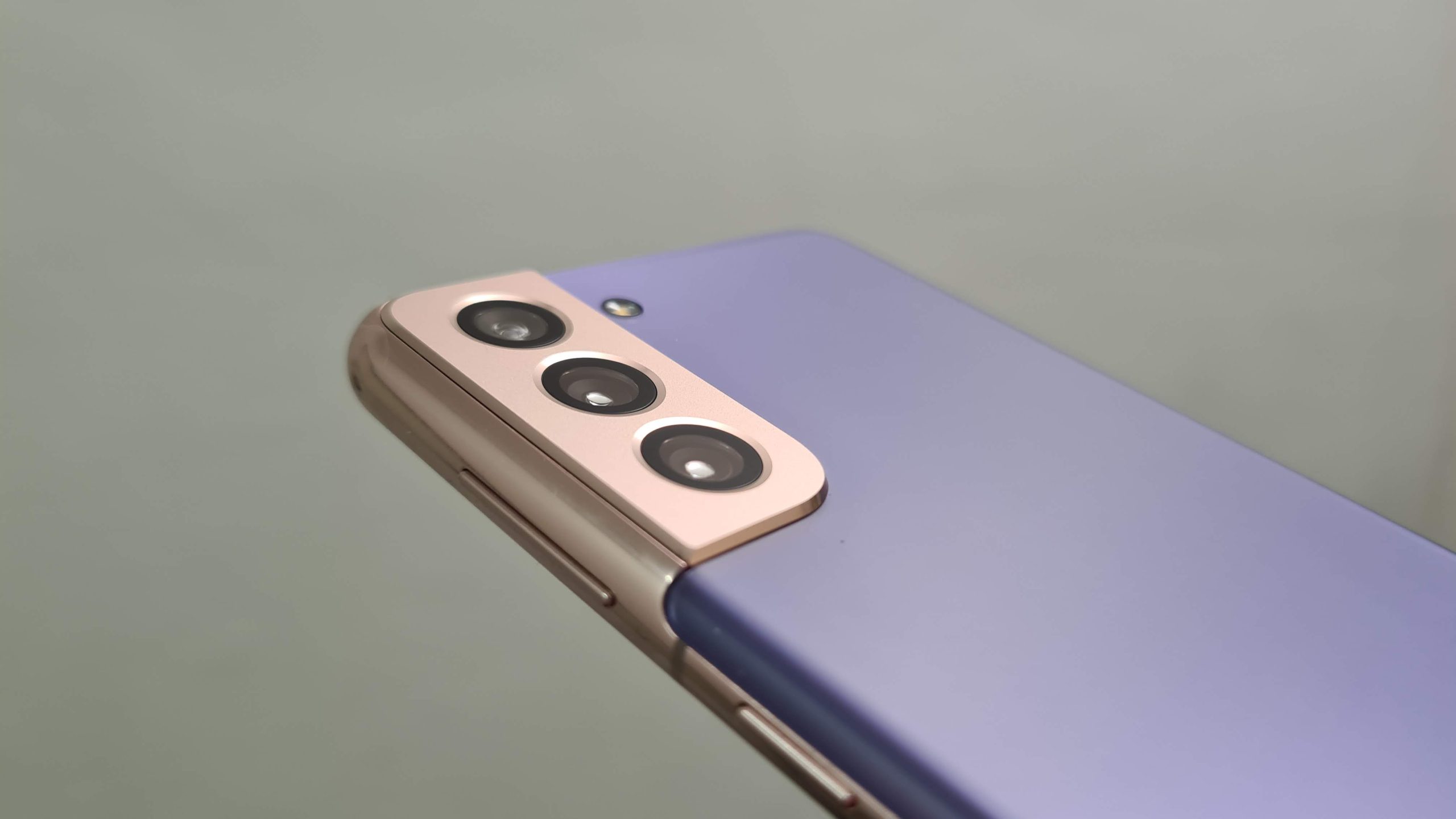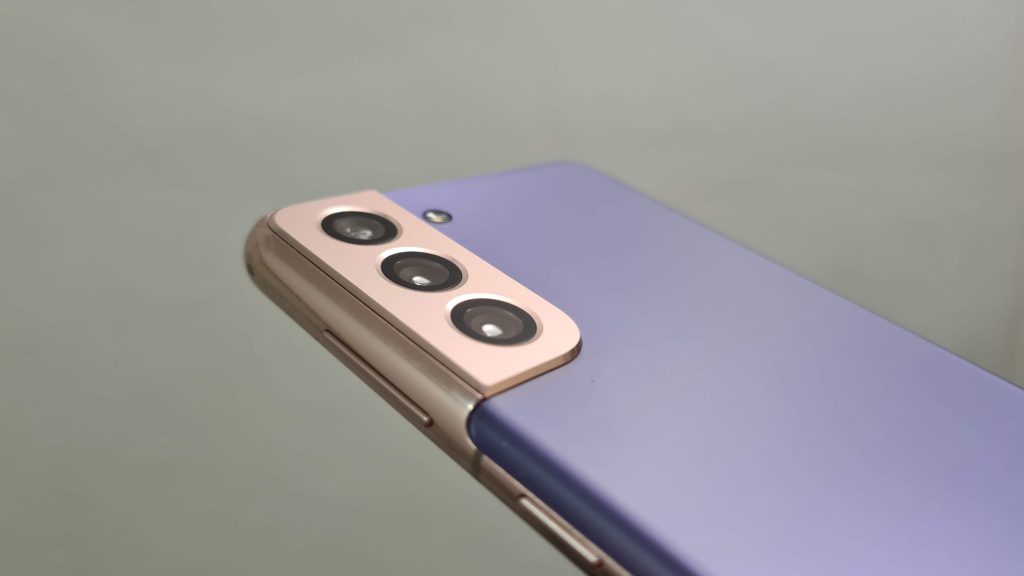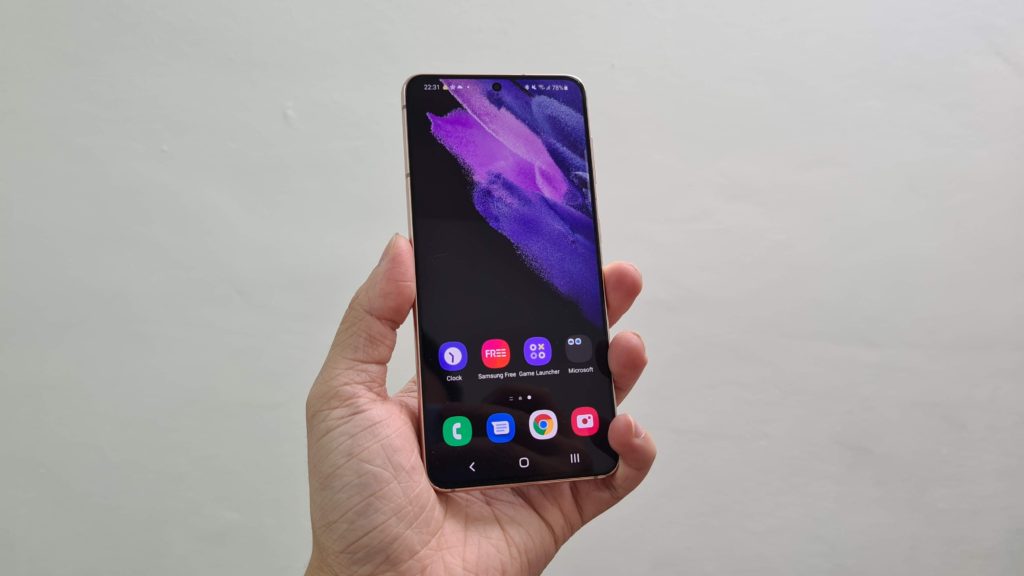Review – Samsung Galaxy S21: All The Right Changes

When the media spotlight is on the Galaxy S21 Ultra, we should not be forgetting the fact that plenty of users are not particularly interested in daily drive a big and heavy super-flagship. I have been a long term Samsung Galaxy S series user ever since the Galaxy S9. Since then, I’ve moved on to Galaxy S10+ and now Galaxy S20+. While you do notice my current and previous phones are Plus variants, that is because I’m using them for my work purposes. Then again, I still find myself taking out the S9 now and then to appreciate how awesome it feels to hold a small and compact phone.
That brings us to the standard Galaxy S21. The one we have here today comes in a gorgeous Phantom Violet colour scheme. Honestly speaking, I like how Samsung has been introducing exclusive colour schemes for every generation. It is a shame that once you missed out, they might not be bringing back the same colour in the next generation.
The designer team in Samsung has done a great job for the Galaxy S21 family. Personally, I think it looks amazing when compared to the boring Galaxy S20 series, even if I’m still using the S20+. The unique placement of the camera bump at the top left corner makes it stand out from the rest of its predecessors.
Speaking of the design, I know there are people complaining about how Samsung has decided to use plastic material for the back cover. Let me ask you a question. Why do you even care about the back cover material when in reality you’re just going to use a phone case with it? Besides, plastic is lighter and more durable compared to glass. The phone still feels solid and dense even after using the so-called “cheap” plastic. In other words, do try holding the phone at Samsung stores before you decide to jump on the hate train just because someone hates it.
Display
The most welcomed change Samsung has done for the Galaxy S21 family is no other than reverting back to the flat display. Curved edges were cool but they never really offer any practical advantages apart from adding cost to the manufacturing. Not to forget how frustrating it is to find a screen protector for it.
At 6.2-inch, some would say this is hardly a compact phone. Well, that’s true considering that my personal favourite Galaxy S9 only comes with a 5.8-inch screen. Nonetheless, it is significantly easier to use than the S21+’s 6.7-inch display. At this point, I also wanted to point out one of the changes people has been dissing on Samsung, which is the screen resolution. Samsung has opted for FHD+ (1080×2400) instead of the QHD+ (1440×3200). Why? Previously if you choose to go 1440p, you’re tied down to 60Hz and only 1080p has a 120Hz high refresh rate. Honestly speaking, for a device of this size, it is not worth to go for 1440p and perhaps Samsung themselves also notice more people are actually using 1080p with 120Hz.
Specs & Performance
In terms of the specs, you can expect the very best out of a flagship smartphone. Samsung Exynos 2100, 8GB RAM and 256GB internal storage. Let us just put aside the argument whether if the Snapdragon or Exynos is better. I believe at this point you have already watched a bunch of YouTube comparison videos on both chips.

To be fair, both Snapdragon and Exynos have their own pros and cons, while the Snapdragon runs cooler, the Exynos has slightly better graphical performance between the two. In terms of everyday usage, I don’t think you could tell from the minuscule difference between the two. Phones are getting better and better in terms of hardware performance and software fluidity, especially on flagship smartphones like the Galaxy S21 which also incorporates the lightweight One UI.
For those who are still relying on microSD card for backup or as simple as storing personal data and files, unfortunately, Samsung has decided to drop the microSD card support entirely.
Camera
If you own a Galaxy S20 from last year, you will be disappointed as the camera hardware hasn’t changed. It’s the same triple-lens rear camera array – 12MP main camera, 12MP ultra-wide camera and 64MP telephoto camera with 3x hybrid optical zoom. Most of the charges are likely to come from the software’s computational photography. I think both the main camera and the wide-angle camera are fantastic while the telephoto can be a hit or miss.
Battery Life
As for the battery life, the Samsung Galaxy S21’s 4000mAh cell is not going to impress anyone especially nowadays you can get phones with 5000 or 6000 mAh batteries. Nonetheless, the phone itself has a solid track record for everyday use. Generally, it can last for a full day unless you start to punish it with frequent GPS usage or gaming sessions.
Recharging, on the other hand, you will have to either rely on your existing charger or buying a brand new charger as Samsung has officially removed the charger from the box. The phone is still capable of supporting Samsung’s 25W fast-charging technology as well as Qi wireless charging.
Should you buy the Samsung Galaxy S21?
Samsung Galaxy S21
Official SRP: RM3,699
The Samsung Galaxy S21 is more like a minor step forward for Samsung, a series dedicated to refining the Galaxy S family. If you own a Samsung Galaxy S20, there’s little to no reason for you to upgrade. The hardware features are very similar between these two generations and most of the difference are on the chipset, software level as well as physical design. Unless you really hate curved edge screen, then yes, you will definitely love the Galaxy S21 family’s flat screen.
Meanwhile, for those who are still rocking older Samsung or even other brands phone, I personally think the Galaxy S21 is an excellent flagship phone to get into the Samsung ecosystem, for example, Samsung Pay. It is especially suitable for users who are looking for a powerful and compact smartphone.

























